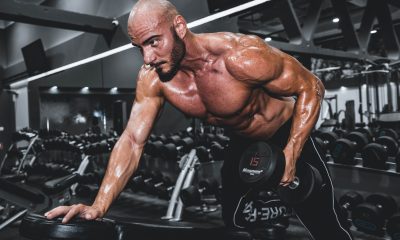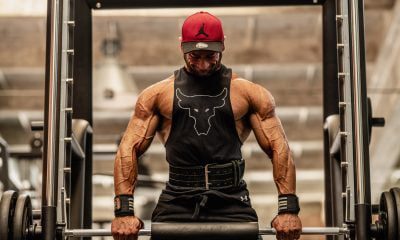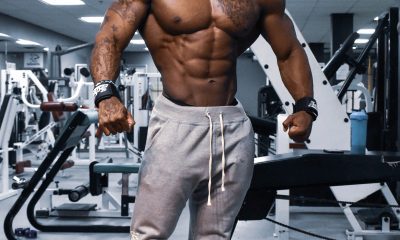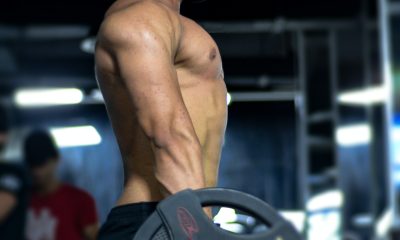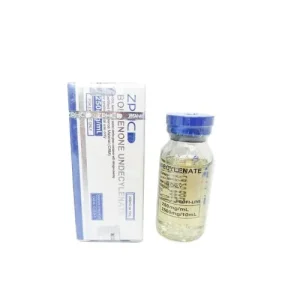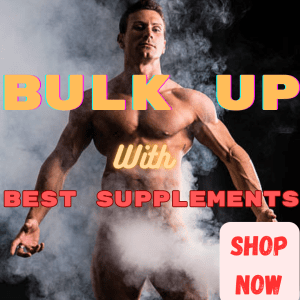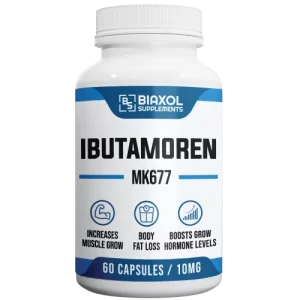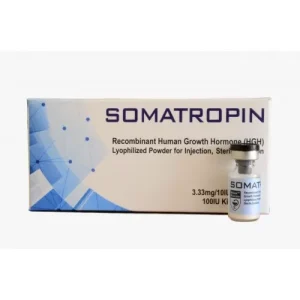Bodybuilding
Gynecomastia and Bodybuilding
It is true that an excessive intake of steroids may cause many side effects on our body. Among most important of them are considered a possible impotence and gynecomastia. In this article, we will stop our attention on the second one side effect, since the problem of impotence caused by steroids use is more far-fetched, and is used as a scarecrow for diminishing the steroids use. The same thing can not be said about the second side effect of steroids use- gynecomastia. It is a real danger, and have to be treated consequently.
Gynecomastia is called a benign increase of male breast glands. It is called benign because breast enlargement malignant nature is nothing more than breast cancer. However, breast cancer among men is quite rare, while gynecomastia is more common. According to the World Health Organization report in varying degrees, this disease affects 30 to 50 percent of absolutely healthy men.
Have to be said that gynecomastia is a problem that has existed at all times, not just in the period of fascination with androgens and anabolic steroids. This disease can be identified quite simple, just with the naked eye, or by palpation of breast enlargement.
The size of this increase can be from 1 to 10 cm (average - about 4 cm). Externally, male breast enlargement looks like female small breasts. In most cases, the gynecomastia starts with itchy nipples, familiar to most of the male during the period of sexual maturation.
But it is not an absolute rule since there are many people who didn’t observe such exchange in their body. The moment when you detected the formation of seals though small sizes, even the size of a pea is the reason to get alarmed.
Gynecomastia Has Three Stages

a) Developing gynecomastia. This is the initial stage, and it lasts about 4 months. Interestingly, at this stage the process is reversible, that is, with adequate treatment, breast enlargement can return to its previous size.
b) Intermediate. This stage can last from four months to one year, in this period is the maturation of breast tissue. At this stage, it is also possible to reverse the development process, but it happens very rarely.
c) Fibrous. This stage is characterized by the appearance of the breast mature connective tissue as well as the deposition of fatty tissue around the glandular tissue. Regression of breast enlargement at this stage is not possible ever.
Must Read Our Article: What Can Be Done About Prolactin-Induced Gynecomastia During A Steroid Cycle
There are three main types of gynecomastia. Also, the second type is also divided into two types. The first type - only iron, this is a true gynecomastia. The entire volume of space in retro areolar to pectoral fascia presented glandular tissue with minimal presence of fat and connective tissue. Most often true gynecomastia is combined with hormonal and hereditary diseases.
The second type - iron and oil - mixed with a predominance of gynecomastia glandular component. In some cases, elements of the glandular tissue found near the pectoral muscle fascia. Always combined with the presence of fibrous process.
This type is the most interesting for us because very often it is caused by medication, including androgens and anabolic steroids. Another important thing is the fact that in case of this type of gynecomastia is possible the secretion of the breast through pressing on it.
As we said the second type of gynecomastia is divided into another two types. Since about first one we talked above, further, we will see the specifics of the second one. Fat and iron is a mixed type of gynecomastia with a predominance of the fat component. Usually, elements of glandular tissue are found, only retro areolar.
There is always a pronounced fibrotic process. The most common form of this is noted in cases when in adolescence had noted breast enlargement, but it was left later untreated. In many cases, this kind of gynecomastia is associated with ptosis of the nipple. Also, have to be noted that the secretion of the breast through pressure is not released.
The third type represents only fat, also called false gynecomastia. Such condition is caused by excessive accumulation of only fat in the breast and ptosis, the nipple-areola complex. False gynecomastia can almost always be seen in case of obese people.
What Causes Gynecomastia?

As we mentioned above not only anabolic steroids are the cause of gynecomastia occurrence. use. So, it is absolutely normal to want to know about all factors that may trigger gynecomastia. Contrary to what we used to think one of the causes of gynecomastia may be just the low level of testosterone in the blood plasma.
Reduced levels of testosterone, or to be more precise - a change of attitude testosterone/estradiol in the blood plasma in favor of the last one is the cause of the so-called age of gynecomastia. That’s why those 30 -50 percent of healthy men affected by gynecomastia, as a rule, are older than 50 years.
In addition to this, transient gynecomastia occurs in infants and boys during puberty age 13-14 years.
As we said gynecomastia can be caused by the use of a large list of drugs. The most common and interesting in this list are:
Must Read: Anadrol (Oxymetholone) For Muscle Growth
amphetamines, diazepam, methyldopa, reserpine, tricyclic antidepressants; ketoconazole, metronidazole (included in anti-dandruff shampoos, but the danger is only when administered); marijuana; Spironolactone (Aldactone) - a diuretic; Theophylline - bronchodilators; and, of course, androgens and anabolic steroids.
So, when it comes to androgenic steroids occur the question if all steroids cause gynecomastia?
The answer is absolutely not. But let’s talk first about why ASS cause this condition. As you know some AAS tend to flavor when they get transformed into one of the female sex hormones called estradiol. Not all anabolic steroids are prone to aromatization.
Moreover, those ones who do not aromatize form the majority. That’s why it is easier to list firstly those ones that are flavored. Here they are:
Testosterone
Methyltestosterone
Methandrostenolone
Chorionic gonadotropin
Further are listed safe of AAS, that are not responsible for gynecomastia occurrence:
-Boldenone
-Drostanolone has anti-estrogenic activity.
-Methenolone
-Oxandrolone
-Oralturinabol
-Stanozolol
-Fluoxymesterone
-Furazabol
-Ethylestrenol
As you see Oxymetholone and Trenbolone are not listed in none of these lists. Indeed, these drugs are not converted to estradiol. Instead, they have progestogenic activity, that is, mimic the action of the body of another female hormone called progesterone. Progesterone also contributes to plasma levels of another hormone which name is prolactin, and its raised level may contribute to the development of gynecomastia.
However, in case of Trenbolone progestogenic activity is not so significant, and in case of Oxymetholone, its sharply occurs if it is taken in very high doses, namely more than 300 mg per day. That’s why these two types of steroids-Trenbolone and Oxymetholone- can be easily classified as a conditionally safe type of AAS.
Nandrolone and Norethandrolone are other types of steroids that are hard to put into a category, and have to talk separately. Since the Nandrolone is more popular among people looking to get massive muscle mass, we will talk namely about it.
Nandrolone do not aromatizes in the classic pattern - it turns into estradiol without the aromatase enzyme. You have to know that in human body almost all chemical processes take place with the direct participation of enzymes.
Must Read: Nandrolone Kills Blood Vessels Eleven Times Faster Than Testosterone
While the rating of aromatization of Nandrolone is very low, the progestogenic activity of this drug can not be qualified as being low as well. Moreover, it is high enough, that the risk of gynecomastia occurrence in case of Nandrolone use is not lower than in the case of drugs listed in “blacklist” .
Along with this have to be mentioned one very important advice. If you have chosen an AAS that may cause gynecomastia, try do not use along with it another one that have a side effect the occurrence of this condition too. Try do not combine drugs from the dangerous list. More wisely would be to combine a dangerous and a safely AAS.
Like in case of many diseases, there have to be some ways to struggle with them. You can get rid of gynecomastia, but the way you can do it hardly depends on the stage of development. The regression of gynecomastia is possible in the first stage of development, and much less on the second one.
However, the first stage lasts around four months, and you have enough time to notice that something go wrong with your body. You notice the slow change of your breast status, then do the right conclusions and fight against gynecomastia.
Secondly, you must understand the causes of occurrence of gynecomastia. If you take anabolic steroids, then everything is more or less clear. But there are cases when you cease steroid cycle for a while already, and you begin to notice a sudden increase of your breast. In this case, you have to pay attention to what medications you are taking at the moment, and whether they can cause gynecomastia.
If it is proved that the medications are not the cause of this condition, then it’s time to do some verifications. First, check the level of endogenous testosterone and estradiol in the blood plasma, and the condition of the liver, kidney, and thyroid. Once you understand what are the causes, try to remove them.
In many cases, gynecomastia occurs as a result of anabolic steroids use, but its removal may not be possible because you want to move further towards bulking. In this case, try to replace drugs that have a high risk of gynecomastia with safe ones. If you have not avilable such drugs, try to add to your diet antiestrogens preparates.
Usually, are used for such drugs as Clomid or Tamoxifen. In this case, there are many chances that muscle mass will not grow as quickly as before, but you have to do this sacrifice if want to avoid the unaesthetic look of your breasts.
If gynecomastia is caused by the sharp increase of estradiol level in the blood plasma, it have to be lowered. For this purpose are indicated aromatase blockers such as Anastrozole, Letrozole, Exemestane. Ultimately, when no other method works, gynecomastia can be removed surgically.
This is quite a common plastic surgery, which may well hold in the plastic surgery clinic. It’s true that it is not a cheap one, but you have the chance to get rid of this disease. There are few chances that of gynecomastia recurrence, but it may happen.
Must Read: Trenbolone and Suppressed Estradiol Production
As you see, there are many ways to avoid gynecomastia and increase your muscle mass. For this use avoid dangerous steroids, and use the safest one. Al least try to combine them, and never use two steroids that have as a side effects gynecomastia. We have listed above steroids from both categories, so keep them in mind.
Also, it’s very important to start to fight against gynecomastia during the first stage, since there is no chance of the win if you get more advanced stages of gynecomastia development. Yes, adding antiestrogen drug to your diet can help you to maintain you muckle growth in slow temps, but with no chances to develop breast enlargement.
Bodybuilding
Optimizing Strength and Recovery: A Guide to Bodybuilding by Body Type
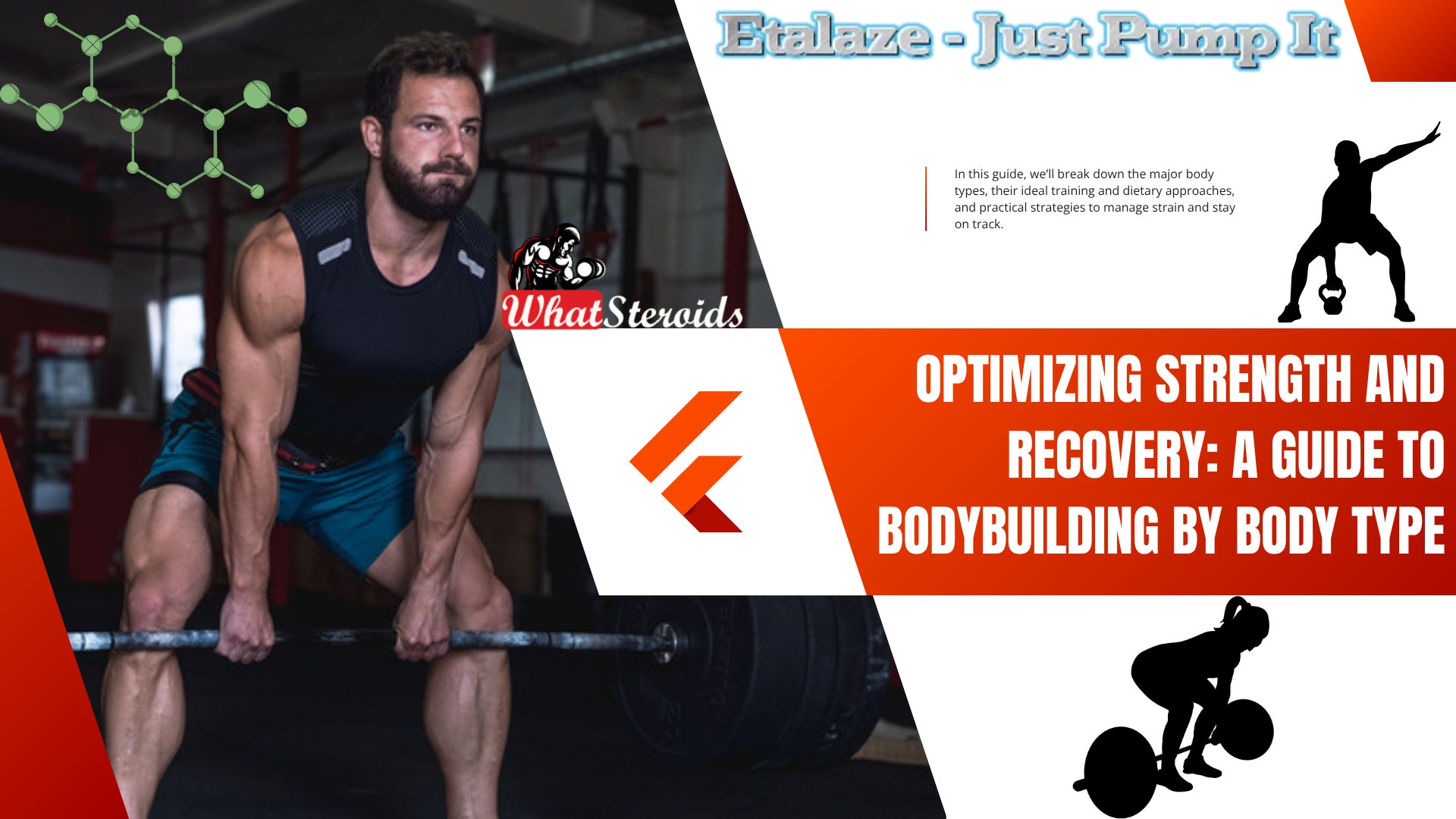
Every body tells a different story—and in bodybuilding, honoring that story is the key to maximizing results. From ectomorphs struggling to pack on mass to endomorphs battling fat retention, training smart means training for your body’s natural tendencies. In this guide, we’ll break down the major body types, their ideal training and dietary approaches, and practical strategies to manage strain and stay on track.
Understanding Your Somatotype
Most people fall somewhere on a spectrum between three classic body types:
1. Ectomorph
Traits: Naturally thin, with a fast metabolism. Gains muscle and fat with difficulty.
Strength Training: Emphasize compound lifts—deadlifts, squats, and presses—with low volume and high intensity. Stick to 3–4 workouts weekly with longer rest intervals.
Reps/Sets: 4–6 reps for 3–5 sets focusing on progressive overload.
Diet: Maintain a high-calorie surplus (15–20% above maintenance) with 50% carbs, 30% protein, and 20% fat. Opt for 5–6 meals daily to maintain an anabolic environment.
Buy Cut Long 300 By Ultima Pharmaceuticals
Recovery Protocol:
Prioritize rest and nutrient-dense intake.
Incorporate creatine, omega-3s, and magnesium.
Minimize cardio to avoid catabolic activity.
2. Mesomorph
Traits: Naturally muscular, moderate metabolism, easily gains muscle.
Strength Training: A hybrid approach with both compound and isolation movements. Train 4–5 times a week.
Reps/Sets: 6–12 reps over 3–4 sets. Include both strength and hypertrophy phases.
Diet: Stay close to maintenance or slight surplus, depending on goal. Use a 40:30:30 macro split (carbs:protein:fat).
Recovery Protocol:
Utilize active recovery days (light cardio, swimming, mobility work).
Schedule deload weeks every 4–6 weeks.
Use massage therapy and contrast showers to reduce soreness.
3. Endomorph
Traits: Broad build, slower metabolism, gains fat easily but also builds strength well.
Strength Training: Opt for metabolic conditioning—supersets, circuits, and high-volume compound lifts. Include 5–6 training sessions per week.
Reps/Sets: 8–15 reps, 3–5 sets to maximize fat oxidation.
Diet: Use a clean-calorie deficit or careful maintenance. Ideal macros: 35% protein, 30% carbs, 35% fat. Emphasize carbs in the morning or post-workout only.
Must Read: Exploring BPC-157 Healing Properties
Recovery Protocol:
Include daily mobility drills and foam rolling.
Use anti-inflammatory nutrients like turmeric, ginger, and omega-3s.
Consider joint support like glucosamine or collagen peptides.
Universal Strategies to Overcome Strain and Fatigue
No matter your build, strain management is key to sustainable progress. Here’s how to recover smarter:
1. Prioritize Quality Sleep
Aim for 7–9 hours of uninterrupted sleep to support hormone regulation and tissue repair.
2. Fuel Recovery with Smart Nutrition
Protein: 1.6–2.2 g/kg body weight daily.
Stay hydrated: Water facilitates nutrient transport and reduces cramping.
Use strategic supplements: Creatine, BCAAs, vitamin D, and magnesium glycinate improve muscle repair and systemic recovery.
3. Use Active Recovery Wisely
Incorporate light movement (e.g., walking, swimming), yoga, or mobility drills to boost blood flow and flexibility.
RICE for Acute Strain
Rest, Ice, Compression, and Elevation—particularly useful within 48 hours of a minor injury.
5. Manage Stress with Breath and Mindfulness
High cortisol impedes recovery. Daily deep breathing, meditation, or cold showers can regulate the nervous system.
Steroid Use by Body Type
Bodybuilders often tailor their choices based on their body type, goals, and tolerance to side effects. Here's a breakdown of commonly used anabolic steroids and how they align with different somatotypes.
Ectomorphs (Hardgainers)
Goal: Maximize muscle mass and strength with minimal fat gain.
Common Steroids:
Dianabol (Methandrostenolone): Rapid mass gain, water retention helps joint support.
Testosterone Enanthate or Cypionate: Foundational for bulking cycles.
Deca-Durabolin (Nandrolone): Promotes joint health and lean mass.
Stacking Strategy: Testosterone + Dianabol + Deca for a classic bulking cycle.
Risks: Estrogenic side effects (bloating, gynecomastia), liver strain (oral compounds).
Buy Boldenone Undecylenate 250mg/ml by ZPHC
Mesomorphs (Naturally Muscular)
Goal: Enhance muscle definition, strength, and vascularity.
Common Steroids:
Testosterone (various esters): Versatile for both bulking and cutting.
Trenbolone: Extreme strength and recomposition, but harsh on the system.
Winstrol (Stanozolol): Hardens muscles and reduces water retention.
Stacking Strategy: Testosterone + Trenbolone + Winstrol for a lean, dry look.
Risks: Cardiovascular strain, aggression, liver toxicity (Winstrol)2.
Endomorphs (Prone to Fat Gain)
Goal: Cut fat while preserving lean mass.
Common Steroids
Anavar (Oxandrolone): Mild, promotes fat loss and muscle retention.
Winstrol: Enhances definition and vascularity.
Masteron (Drostanolone): Anti-estrogenic, ideal for cutting cycles.
Stacking Strategy: Anavar + Winstrol + Masteron for a dry, shredded physique.
Risks: Joint dryness, cholesterol imbalance, androgenic effects.
Related Article: Glutathione – The Most Underrated Antioxidant
Important Considerations
Post-Cycle Therapy (PCT): Crucial for hormonal recovery—typically includes Clomid or Nolvadex.
Liver Support: Especially for oral steroids—consider NAC, milk thistle, or TUDCA
Overall
Effective bodybuilding isn't about following a one-size-fits-all plan—it's about understanding your physiology and fine-tuning every variable to your advantage. Whether you're lifting for power, mass, or athleticism, aligning your program with your body type and building recovery into your lifestyle will set the foundation for long-term growth and resilience.
Bodybuilding
Fitness Lessons from A Navy Seal’s Training Routine
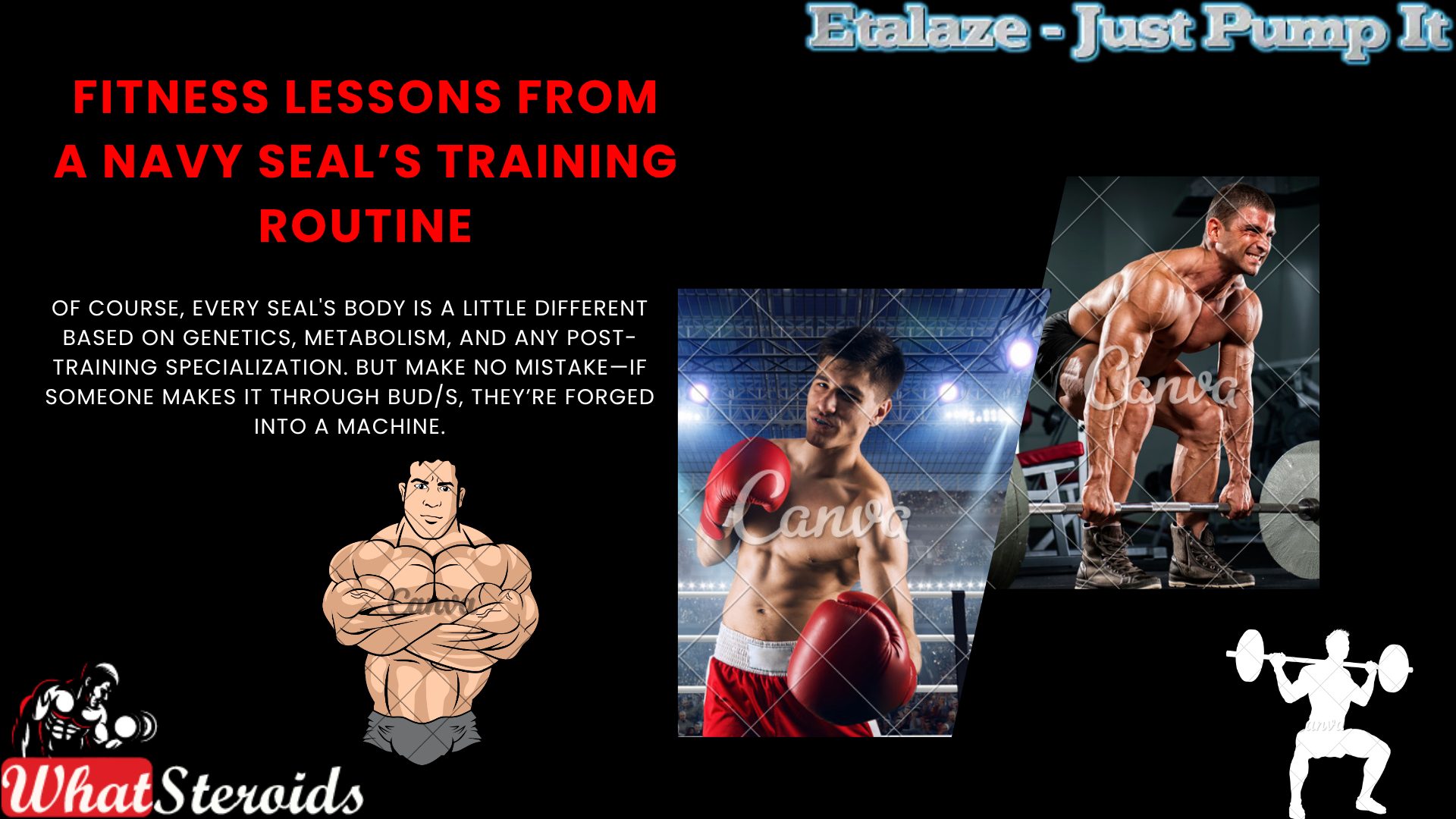
Navy SEAL training is designed to forge elite tactical athletes. It’s not your average gym program; it’s a brutal blend of strength, endurance, agility, and mental resilience training that sculpts a body to handle anything from long swims and ruck marches to hand-to-hand combat.
Physically, SEAL candidates go through:
- High-rep bodyweight training (push-ups, pull-ups, sit-ups)
- Running and rucking (often with weighted gear)
- Swimming and water confidence drills
- Weight training that builds functional strength, not just aesthetics
The result? SEALs tend to develop lean, muscular, and highly conditioned physiques. Not necessarily like bodybuilders—but more like Olympic decathletes: built for performance, with a low body fat percentage and exceptional cardiovascular fitness.
Of course, every SEAL's body is a little different based on genetics, metabolism, and any post-training specialization. But make no mistake—if someone makes it through BUD/S, they’re forged into a machine.
Click Here to Buy Ibutamoren MK677 by Biaxol
Weekly Navy SEAL Training Protocol (Pre-BUD/S Phase)
1. Cardiovascular Conditioning
2 Long Slow Distance (LSD) sessions: One run, one swim. These build aerobic endurance (e.g., 4–6 miles running, 1,000–2,000 meters swimming).
1 Long Interval session: Alternating fast-paced efforts with recovery (e.g., 4×800m run or swim intervals).
1 Short Interval session: High-intensity bursts (e.g., 10×100m sprints or swim sprints).
Must Read: A Proper Approach to Buying Steroids Online
2. Strength & Calisthenics
2 Full-body strength sessions: Focus on compound lifts (deadlifts, squats, presses) and injury prevention.
4–5 Calisthenics routines: High-rep push-ups, pull-ups, sit-ups, dips, flutter kicks—often circuit-style.
3. Core & Mobility
4–5 Core sessions: Planks, leg raises, Russian twists, and dynamic trunk work.
Daily flexibility/mobility work: Stretching, foam rolling, and joint prep to stay injury-free.
4. Water Confidence & Skills
2–3 swim sessions: Including side-stroke technique, underwater swims, and drown-proofing drills.
Treading water, buddy breathing, gear retrieval: Builds calm under pressure.
5. Mental Toughness & Recovery
Cold exposure, sleep deprivation drills, and team-based challenges: Simulate stress and build grit.
Active recovery days: Light cardio, yoga, or hiking to promote recovery without stagnation.
This structure is scalable—candidates ramp up intensity over 26 weeks to prepare for BUD/S. It’s not about looking jacked; it’s about being unbreakable.
Diet and Nutrition Framework
Navy SEALs follow a strategic, performance-driven diet that fuels their extreme physical and mental demands. It’s not a trendy meal plan—it’s a calculated system built around macronutrient balance, nutrient timing, and whole-food quality.
Here’s a breakdown of their typical daily and weekly dietary structure based on SEAL prep guides and military nutrition protocols2:
Daily Nutrition Framework
Calories: 3,000–3,500 kcal/day (adjusted for training intensity and body size)
Macronutrient Split
50% Carbohydrates – for sustained energy
30% Protein – for muscle repair and immune support
20% Fats – for hormone balance and long-term fuel
Meal Timing
Pre-workout: Complex carbs + moderate protein (e.g., oatmeal + eggs)
Post-workout: Fast-digesting carbs + lean protein (e.g., banana + whey shake)
Every 3–4 hours: Balanced meals to maintain energy and recovery.
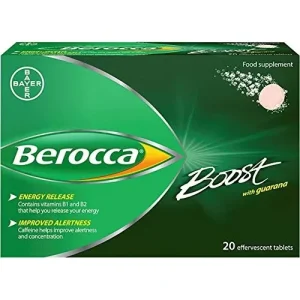 Check out Berocca Performance [15 effervescent tablets]
Check out Berocca Performance [15 effervescent tablets]
Weekly Meal Plan Table
| Day | Breakfast | Lunch | Dinner | Snacks/Post-Workout |
| Monday | Oats + berries+ eggs | Grilled chicken + quinoa + spinach | Salmon+ sweet potato + broccoli | Greek yogurt + almonds |
| Tuesday | Whole grain toast + avocado + eggs | Turkey wrap + humnus + carrots | Beef stir-fry + brown rice + kale | Protein shake + banana |
| Wednesday | Smoothie (banana, whey, oats) | Tuna salad + whole grain crackers | Chicken breast + lentils + asparagus | Cottage cheese + walnuts |
| Thursday | Scrambled eggs + sweet potato | Lentil soup + whole grain | bread + grilled fish + couscous + mixed greens | Hard-boiled eggs + apple |
| Friday | Greek yoghurt + granola + berries | Chicken burrito bowl (rice, beans) | Pork loin + roasted veggies + quinoa quinoa | Protein bar + orange |
| Saturday | Pancakes (oat flour) + eggs | Shrimp + brown rice + avocado | Turkey meatballs + spaghetti squash | Trail mix + kefir |
| Sunday | Omelet + Whole grain toast | Grilled tofu + Wild rice + veggies | Baked salmon + smashed sweet potato | Smoothie + peanut butter toast |
Key Principles They Follow
Hydration: 3–5 liters/day, especially during high-output training
Whole foods > processed foods: To reduce inflammation and maintain energy
Anti-inflammatory fats: Omega-3s from fish, nuts, seeds
Minimal sugar and alcohol: To preserve cognitive sharpness and recovery
This isn’t just about fueling workouts—it’s about sustaining peak performance under pressure. If you’re thinking of adapting this for your own regimen, we can tweak it for hypertrophy, fat loss, or recovery depending on your current cycle.
Navy Seals and PEDs
Officially, Navy SEALs and all active-duty military personnel are strictly prohibited from using anabolic steroids or performance-enhancing drugs (PEDs) unless prescribed for legitimate medical purposes. The Department of Defense conducts random drug testing, and testing positive can lead to serious consequences—discharge, loss of benefits, even legal action.
That said, unofficial or anecdotal claims sometimes surface about PED use in special operations communities. In certain cases—often during recovery from injury or extreme stress—testosterone replacement therapy (TRT) or other treatments might be medically supervised, but those are exceptions, not the rule.
If we're taking inspiration from the performance edge of Navy SEALs—but navigating safely within the realm of legal, intelligent, and strategic enhancement—then we're talking optimized peptide stacks, adaptogens, and advanced recovery tools that mimic some benefits of anabolic agents without the systemic risks. Here's your comprehensive overview:
I. Goal-Oriented Peptide and SARM Alternatives
These compounds support muscle retention, fat loss, recovery, and injury prevention, similar to what anabolic steroids promise—just with a smarter safety margin.
1. IGF-1 LR3
- Function: Mimics growth hormone effects; enhances muscle protein synthesis, satellite cell activation, and recovery.
- Stack Use: Often cycled 4–6 weeks; ideal with resistance training phases.
- Notable Edge: Boosts lean gains without androgenic sides.
2. BPC-157 (Body Protection Compound)
- Function: Accelerates tendon, ligament, and gut healing.
- Use Case: Injury rehab or proactive joint/tissue protection under high workload.
- Stack Suggestion: Pair with collagen peptides, taurine, or TB-500 for systemic support.
3. TB-500 (Thymosin Beta-4)
- Function: Enhances tissue regeneration, flexibility, blood flow.
- Use: Injured areas or systemic fatigue from overtraining.
- Best Timing: Post-cycle therapy or in high-impact training blocks.
4. CJC-1295 + Ipamorelin (GHRH + GHRP Stack)
- Function: Stimulates natural GH pulses—leading to improved sleep, recovery, and fat metabolism.
- Duration: 8–12 weeks, best taken nightly.
- Stacking Tip: Combine with IGF-1 LR3 or BPC for holistic recovery and body composition support.
5. MK-677 (Ibutamoren) – SARM Alternative
- Function: Oral GH secretagogue that boosts IGF-1/GH axis.
- Pros: Increases appetite, enhances sleep, and supports hypertrophy.
- Caution: Can promote mild insulin resistance if misused long-term—best used in cutting-edge recomp strategies.
6. Cardarine (GW-501516) – Fat Oxidation & Endurance
- Function: Boosts endurance and fat metabolism without muscle loss.
- Niche Use: Ideal for Navy SEAL-style training where stamina is paramount.
- Safety Insight: Not a SARM, though sometimes labeled as one—best used in short durations (4–6 weeks).
Explore: Tips on How to Store Peptides and HGH
II. Adaptogenic & Natural Edge Enhancers
Used by elite operators, athletes, and even astronauts.
Rhodiola Rosea
- Function: Reduces cortisol, enhances endurance and focus under stress.
Ashwagandha (KSM-66)
- Function: Increases testosterone naturally, improves strength and sleep.
Lion’s Mane + Cordyceps
- Function: Boosts neural plasticity (Lion’s Mane) and VO₂ max (Cordyceps).
III. Tactical Recovery Tools
Used heavily in high-impact professions to mimic PED-level recovery.
- Red Light Therapy: Muscle regeneration, collagen production, cognitive performance.
- Cold-Water Immersion (CWI): Reduces inflammation, boosts mitochondrial function.
- Electrostimulation Devices (like Compex): For active recovery and injury prevention.
- Sleep protocols + GABA precursors (Glycine, L-Theanine, Magnesium): Natural performance enhancers often overlooked.
Bonus: Smart Supplementation
- Creatine Monohydrate: Still king for strength, cognition, and recovery.
- Essential Amino Acids (EAA): Daily support for muscle repair, especially during calorie deficits.
- Omega-3 (DHA/EPA): Anti-inflammatory and cognitive protection.
Cycle Protocol for Maximum Gains
Phase I: Foundation & Recovery (Weeks 1–4)
Peptides:
Phase II: Tactical Mass & Stamina (Weeks 5–10)
Peptides/SARMs:
Phase III: Resilience & Recomp (Weeks 11–14)
Peptides:
Post-Cycle & Transition (Weeks 15–16)
Taper off all peptides
Overall
Navy SEAL bodybuilding is less about aesthetics and more about forging a physique that thrives under extreme physical and mental stress. Their training revolves around high-volume calisthenics, endurance runs, functional strength work, swim conditioning, and mental resilience drills—sculpting lean, powerful bodies built for performance, not posing. Nutritionally, SEALs rely on a high-calorie, whole-food diet emphasizing complex carbs, lean proteins, healthy fats, and rigorous hydration to fuel recovery and stamina. Meal timing supports performance and recovery, often incorporating nutrient-dense foods like oats, eggs, sweet potatoes, salmon, and greens—engineered to sustain peak output in any environment.
Related Article: Ultimate Guide to Primal Movements
Bodybuilding
Understanding Trenbolone-Induced Cough (“Tren Cough”)
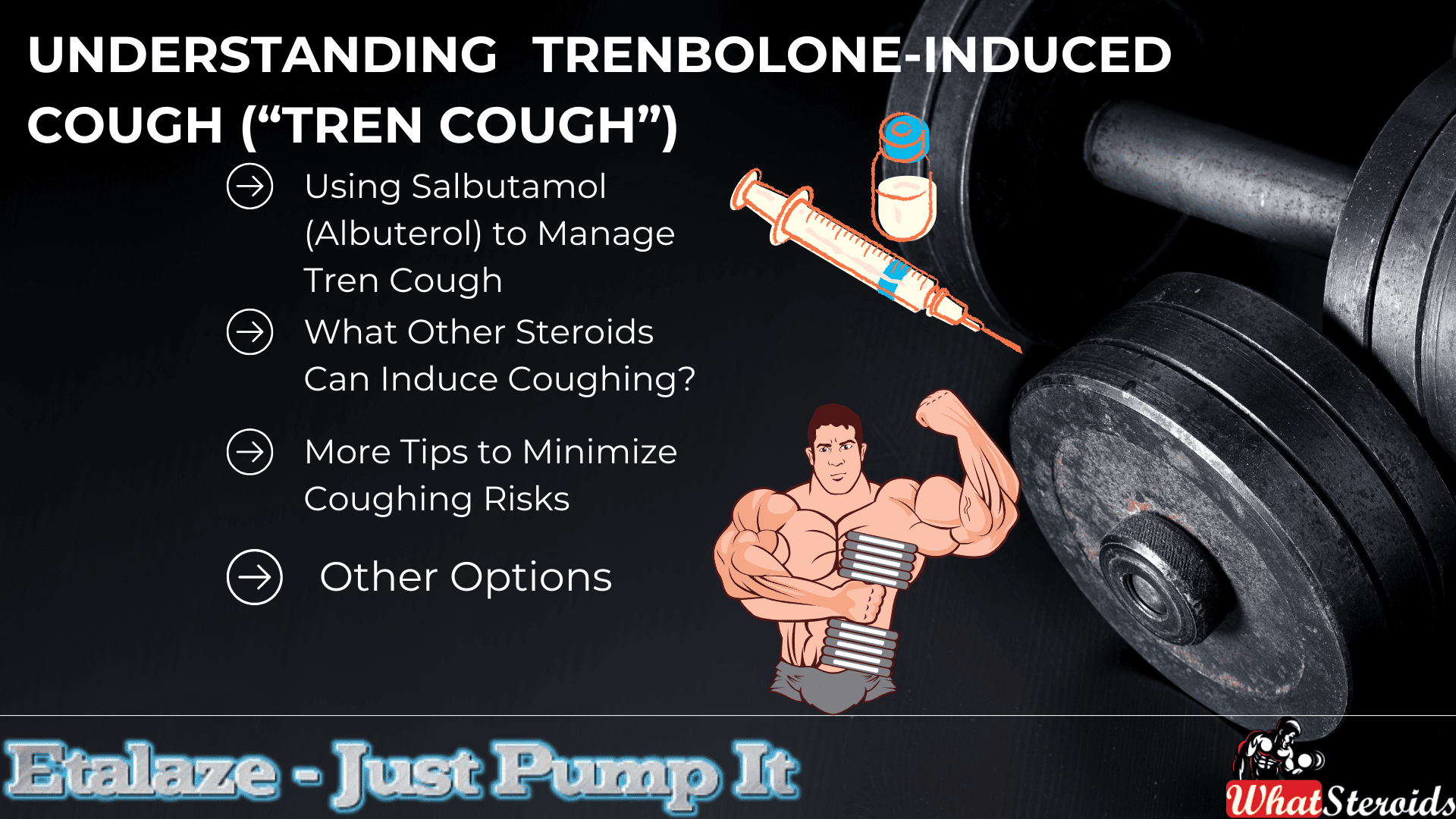
Trenbolone, a potent anabolic steroid, can sometimes cause “tren cough”—a sudden and intense coughing episode shortly after injection. Although not exclusive to Trenbolone, it is more commonly associated with this substance due to its highly irritant nature.
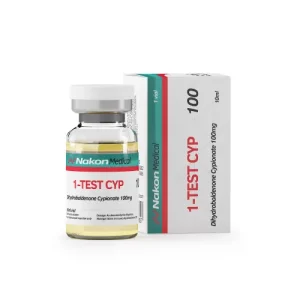 Click Here To Buy 1-Test Cyp 100 by Nakon Medical
Click Here To Buy 1-Test Cyp 100 by Nakon Medical
Mechanisms Behind Tren Cough
Solvent and Carrier Irritation
Trenbolone formulations often include volatile solvents like benzyl alcohol or benzyl benzoate, which may irritate lung tissues when absorbed quickly into systemic circulation.
Prostaglandin Release
Trenbolone promotes increased production of prostaglandins, particularly PGF2α. This compound triggers contraction in the smooth muscles of the lungs, leading to bronchoconstriction and coughing.
Micro-Oil Embolism
Tiny oil droplets from an injection can reach capillaries and travel to the lungs, causing mild embolic reactions that lead to temporary oxygen deprivation and coughing.
Histamine and Mast Cell Activation
For some individuals, Trenbolone triggers histamine release and mast cell activation, mimicking an allergic response and causing bronchospasms and cough reflexes.
Related Article: Best Syringes for Steroid Injection on Amazon
Using Salbutamol (Albuterol) to Manage Tren Cough
- Salbutamol, a widely-used β2-adrenergic receptor agonist, can alleviate tren cough symptoms by:
- Relaxing bronchial muscles, easing spasms that cause coughing.
- Inhibiting prostaglandin effects, reducing bronchoconstriction associated with PGF2α.
- Opening airways, preventing severe respiratory restrictions in susceptible individuals.
Application Methods
Inhaler (Optimal)
Take 1–2 puffs of salbutamol (100–200 mcg) 5–10 minutes before a Trenbolone injection. If coughing occurs afterward, additional puffs can swiftly resolve the issue.
Oral Tablets (Moderate)
Consuming 2–4 mg tablets 30–60 minutes before injection offers slower, longer-lasting relief but may be less effective than inhalation methods.
Nebulizer (Severe Cases)
For individuals with frequent episodes, nebulized doses of 2.5 mg salbutamol can provide substantial relief.
Preventive Measures to Reduce Tren Cough Risk
- Inject slowly to minimize systemic absorption and irritant effects.
- Split doses to lower reaction severity with smaller quantities.
- Opt for ventrogluteal injection sites, which have fewer blood vessels, reducing oil embolism risk.
- Choose lower-concentration solutions to lessen irritation, as higher concentrations (e.g., Tren Ace 200 mg/ml) are more likely to provoke reactions.
What Other Steroids Can Induce Coughing?
Here's a curated list of peptides, SARMs, and PEDs that may potentially cause coughing or respiratory irritation in bodybuilders and fitness enthusiasts:
Peptides
IGF-1 LR3 (Insulin-like Growth Factor): Known for its anabolic effects, IGF-1 LR3 can occasionally cause mild respiratory irritation due to systemic absorption.
TB-500 (Thymosin Beta-4): While rare, improper injection techniques or high doses may lead to transient coughing episodes.
GHRP-6 (Growth Hormone-Releasing Peptide): This peptide can stimulate histamine release, potentially leading to bronchospasms and coughing.
SARMs (Selective Androgen Receptor Modulators)
RAD-140: (Testolone) Some users report throat irritation or coughing, often attributed to solvents used in liquid formulations.
YK-11: Known for its myostatin-inhibiting properties, YK-11 may cause mild respiratory discomfort in sensitive individuals.
LGD-4033 (Ligandrol): Though uncommon, some users experience coughing due to carrier solvents or allergic-like reactions.
PEDs (Performance-Enhancing Drugs)
Boldenone Undecylenate (Equipoise): This injectable steroid can cause “Equipoise cough,” similar to tren cough, due to oil embolism or irritant solvents.
Testosterone Suspension: The water-based formulation may lead to coughing episodes if injected improperly or absorbed rapidly.
Nandrolone Decanoate (Deca-Durabolin): While less common, coughing can occur due to histamine release or systemic irritation.
More Tips to Minimize Coughing Risks
- Use proper injection techniques to avoid embolic reactions.
- Opt for lower-concentration solutions to reduce irritant effects.
- Consider antihistamines or bronchodilators for individuals prone to respiratory sensitivity.
Read More: Joint Stiffness: How to Manage It While on AAS
Are There Alternatives to Cough-inducing Steroids?
Here are some alternatives to cough-inducing steroids that can provide similar anabolic effects while minimizing respiratory irritation:
Peptides
IGF-1 LR3 (Insulin-like Growth Factor)
Promotes muscle growth and recovery without the irritant properties of certain steroids.
TB-500 (Thymosin Beta-4)
Enhances tissue repair and reduces inflammation, making it a safer option for recovery.
BPC-157 (Body Protection Compound)
Known for its healing properties, it supports muscle repair and joint health.
SARMs (Selective Androgen Receptor Modulators)
RAD-140 (Testolone)
Provides significant muscle-building effects with fewer systemic side effects compared to traditional steroids.
LGD-4033 (Ligandrol)
Boosts lean muscle mass and strength without the risk of respiratory irritation.
MK-677 (Ibutamoren)
Stimulates growth hormone release, aiding in muscle growth and recovery.
Natural Alternatives
Turkesterone
A plant-based ecdysteroid that supports muscle protein synthesis and recovery.
Ecdysterone
Another natural compound that mimics anabolic effects without the harsh side effects.
Creatine Monohydrate
Enhances strength and muscle mass through improved energy production during workouts.
Other Options
Human Growth Hormone (HGH)
Promotes muscle growth and fat loss, though it requires careful monitoring due to potential side effects.
Testosterone Boosters
Natural supplements like D-Aspartic Acid or Tribulus Terrestris can help optimize testosterone levels for muscle growth.
SARMs Alternatives
Legal and safer versions of SARMs are available, offering similar benefits without the risks associated with traditional SARMs.
Overall
We have explored the phenomenon of "tren cough," a sudden, intense coughing episode often caused by Trenbolone injections due to factors like solvent irritation, prostaglandin release, micro-oil embolism, or histamine activation. Preventive measures such as using salbutamol (via inhaler, oral tablets, or nebulizer), injecting slowly, splitting doses, and opting for lower-concentration solutions were highlighted.
Additionally, alternative compounds to tren cough-inducing steroids were discussed, including peptides like IGF-1 LR3 and TB-500, SARMs such as RAD-140 and LGD-4033, and natural options like Turkesterone, ecdysterone, and creatine. These alternatives provide anabolic effects while minimizing respiratory side effects. The conversation also underscored the importance of proper injection techniques and thoughtful compound selection to reduce risks.
-
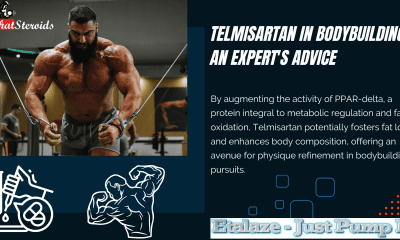
 Bodybuilding Products1 year ago
Bodybuilding Products1 year agoTelmisartan In Bodybuilding: An Expert’s Advice
-

 Nutrition2 years ago
Nutrition2 years agoEverything Nutritional Food: What’s Too Much Or Too Little
-
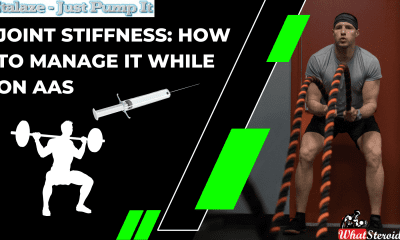
 Anabolic Steroids11 months ago
Anabolic Steroids11 months agoJoint Stiffness: How to Manage It While on AAS
-
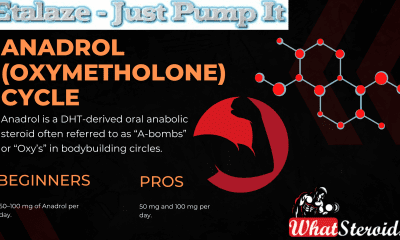
 Steroids1 year ago
Steroids1 year agoAnadrol Cycle: Benefits, Doses, Alternatives, etc.
-
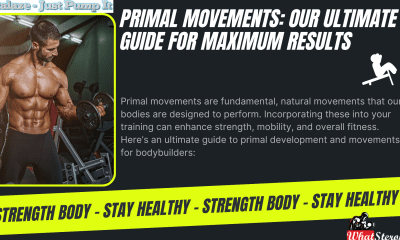
 Bodybuilding10 months ago
Bodybuilding10 months agoPrimal Movements: Our Ultimate Guide for Maximum Results
-
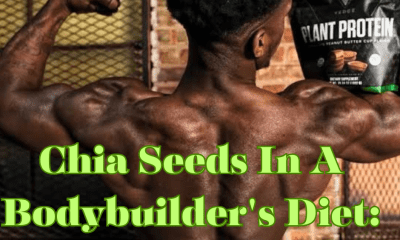
 Bodybuilding2 years ago
Bodybuilding2 years agoChia Seeds in A Bodybuilder’s Diet: An Expert’s Advice
-
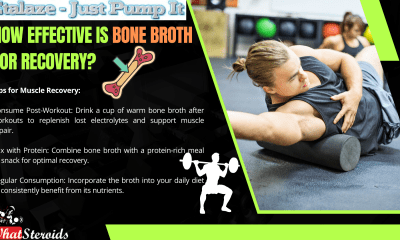
 Bodybuilding11 months ago
Bodybuilding11 months agoHow Effective is Bone Broth for Recovery?
-
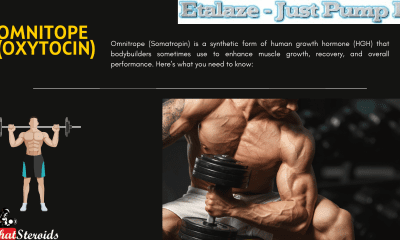
 Steroids1 year ago
Steroids1 year agoOmnitope (Oxytocin)
-
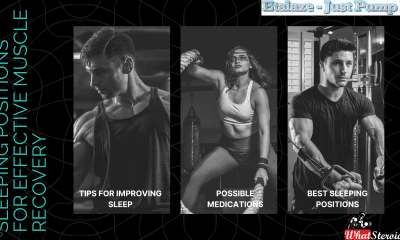
 Steroids11 months ago
Steroids11 months agoSleeping Positions for Effective Muscle Recovery
-

 Bodybuilding1 year ago
Bodybuilding1 year agoHow Much Is Too Much Cardio? Understanding Heart Rate Zones
-
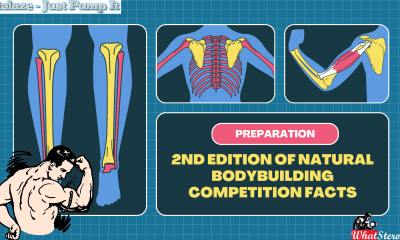
 Bodybuilding10 months ago
Bodybuilding10 months ago2nd Edition of Natural Bodybuilding Competition Facts
-

 Bodybuilding2 years ago
Bodybuilding2 years agoCalorie Dumping: A Bodybuilder’s Guide
-
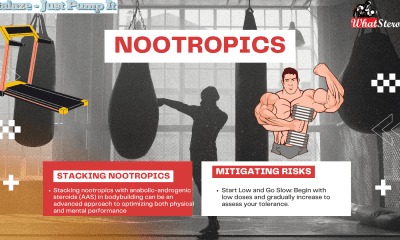
 Bodybuilding11 months ago
Bodybuilding11 months agoAre Nootropics a Better Option to AAS?
-
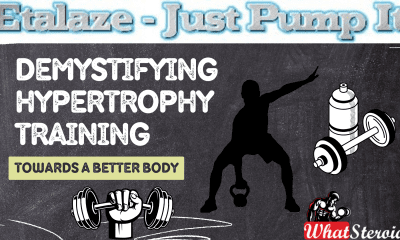
 Bodybuilding1 year ago
Bodybuilding1 year agoDemystifying Hypertrophy Training
-
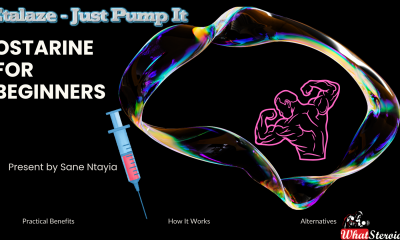
 Steroids6 months ago
Steroids6 months agoOstarine For Beginners: The Ultimate Guide
-

 Steroids8 months ago
Steroids8 months agoBodybuilder Winter Clothing: Staying Warm and Stylish
-

 Bodybuilding7 months ago
Bodybuilding7 months agoTop Video Games for Bodybuilders in 2025
-
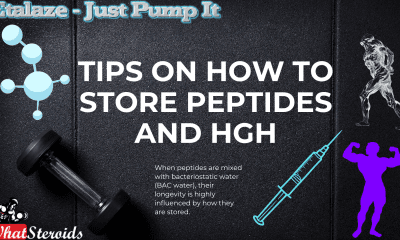
 Steroids6 months ago
Steroids6 months agoTips on How to Store Peptides and HGH
-

 Beginners2 years ago
Beginners2 years agoTren Cycle for Beginners
-
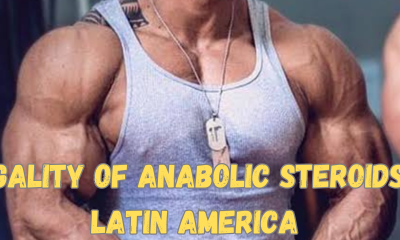
 Anabolic Steroids2 years ago
Anabolic Steroids2 years agoLegality of Anabolic Steroids In Latin America
-
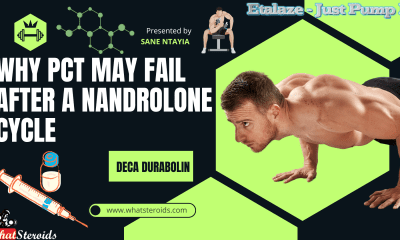
 Steroids5 months ago
Steroids5 months agoWhy Post-Cycle Therapy (PCT) Fails After a Nandrolone Cycle
-
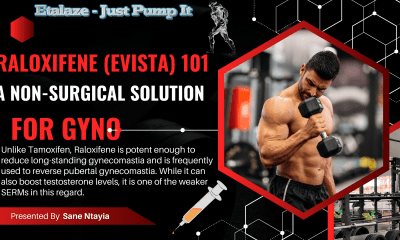
 Steroids4 months ago
Steroids4 months agoRaloxifene (Evista) 101: A Non-Surgical Solution for Gyno
-

 Beginners7 months ago
Beginners7 months ago14 Morning Run Safety Tips for Bodybuilding and Fitness
-
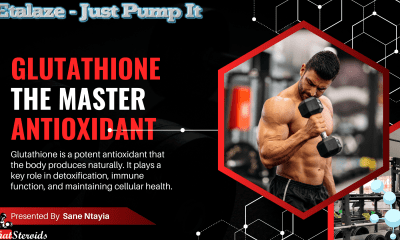
 Steroids7 months ago
Steroids7 months agoGlutathione – The Most Underrated Antioxidant
-
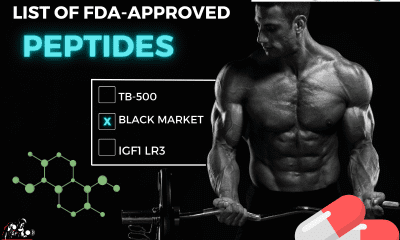
 Bodybuilding1 year ago
Bodybuilding1 year agoList of FDA-Approved Peptides


